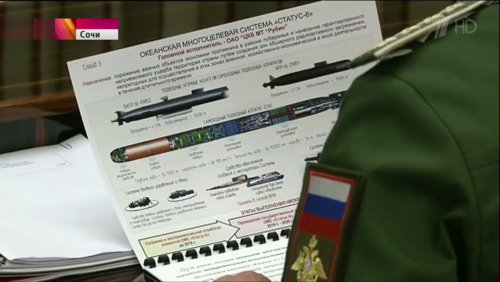- Joined
- 21 April 2009
- Messages
- 13,157
- Reaction score
- 6,024
Seeking “Intelligent Commonality” in New Ballistic Missiles
—Otto Kreisher
9/21/2015
Faced with similar requirements to modernize their aging strategic ballistic missiles, the Air Force and Navy are working on an “intelligent commonality” program to find ways to reduce the cost of replacements for the land- and sea-based nuclear-armed missiles, said Vice Adm. Terry Benedict, director of the Navy’s Strategic Systems Programs, on Sept. 17. The silo-based Minuteman III and the submarine-launched Trident D5 both use decades-old technology and the services are struggling to keep them operating as parts of the nuclear deterrent triad, Benedict said. But both will have to be replaced by new missiles, he added. With an expected high cost for new missile and constrained budgets, “we need to do something different, smarter.” The two services “have an obligation to present to national leaders ways to make that modernization affordable,” Benedict said at a conference sponsored by Task Force 21, the Minot, N.D., chamber of commerce, and AFA. Benedict said members of his staff are working with similar Air Force personnel to study “what components can be made common” in the future missiles. The staffs have been told that any replacement missiles must fit in the existing silos and submarine missile tubes without major adjustments, he said.
====================================================================
Experts Defend Nuclear Deterrent Triad
—Otto Kreisher 9/21/2015
An array of defense experts, ranging from retired Air Force four-stars to members of Congress and academicians, argued Sept. 17 that the nuclear deterrent force is as important to US security today as it was in the Cold War, but it must be modernized. Citing President Vladimir Putin’s statements that Russia might use nuclear weapons to constrain a conventional conflict, and their possession by China and North Korea, retired US Strategic Command boss Gen. Robert Kehler said “nuclear weapons are not gone, and are not going to be gone any time soon.” They are still part of the defense policies “of many nations around the world.” The same argument was offered by former Air Force Chief of Staff Gen. Larry Welch and Frank Miller, a former non-proliferation official, who joined the bipartisan congressional delegation from North Dakota in supporting retention and improvement of the US nuclear triad. The speakers also disputed the claims by anti-nuclear groups that eliminating nuclear weapons would be a “humanitarian” step, asserting that they have prevented conflict between major powers since 1945, in contrast to the massive destruction of 20th century conventional wars. The forum was held by the Minot, N.D., chamber of commerce, Task Force 21, and the Air Force Association.
—Otto Kreisher
9/21/2015
Faced with similar requirements to modernize their aging strategic ballistic missiles, the Air Force and Navy are working on an “intelligent commonality” program to find ways to reduce the cost of replacements for the land- and sea-based nuclear-armed missiles, said Vice Adm. Terry Benedict, director of the Navy’s Strategic Systems Programs, on Sept. 17. The silo-based Minuteman III and the submarine-launched Trident D5 both use decades-old technology and the services are struggling to keep them operating as parts of the nuclear deterrent triad, Benedict said. But both will have to be replaced by new missiles, he added. With an expected high cost for new missile and constrained budgets, “we need to do something different, smarter.” The two services “have an obligation to present to national leaders ways to make that modernization affordable,” Benedict said at a conference sponsored by Task Force 21, the Minot, N.D., chamber of commerce, and AFA. Benedict said members of his staff are working with similar Air Force personnel to study “what components can be made common” in the future missiles. The staffs have been told that any replacement missiles must fit in the existing silos and submarine missile tubes without major adjustments, he said.
====================================================================
Experts Defend Nuclear Deterrent Triad
—Otto Kreisher 9/21/2015
An array of defense experts, ranging from retired Air Force four-stars to members of Congress and academicians, argued Sept. 17 that the nuclear deterrent force is as important to US security today as it was in the Cold War, but it must be modernized. Citing President Vladimir Putin’s statements that Russia might use nuclear weapons to constrain a conventional conflict, and their possession by China and North Korea, retired US Strategic Command boss Gen. Robert Kehler said “nuclear weapons are not gone, and are not going to be gone any time soon.” They are still part of the defense policies “of many nations around the world.” The same argument was offered by former Air Force Chief of Staff Gen. Larry Welch and Frank Miller, a former non-proliferation official, who joined the bipartisan congressional delegation from North Dakota in supporting retention and improvement of the US nuclear triad. The speakers also disputed the claims by anti-nuclear groups that eliminating nuclear weapons would be a “humanitarian” step, asserting that they have prevented conflict between major powers since 1945, in contrast to the massive destruction of 20th century conventional wars. The forum was held by the Minot, N.D., chamber of commerce, Task Force 21, and the Air Force Association.


